Conversion optimization is rapidly becoming a crucial aspect of modern-day marketing.
Being able to validate hypotheses and witness a direct boost in profit excites eCommerce and SaaS owners and motivates them to seek out and apply the most effective CRO strategies.
Unfortunately, this eagerness has led some companies to engage in unethical practices, known as blackhat CRO, which can tarnish their brand reputation and compromise user experience.
This article will explore the definition of blackhat CRO, its various forms, and the negative impacts of this approach, and provide tips on conducting ethical CRO practices.
What is Blackhat CRO?
Blackhat CRO is the act of applying dark patterns and manipulating cognitive biases to push visitors into instant conversion.
It involves manipulating users into taking specific actions, often without their knowledge or consent.
To understand the concept of Blackhat CRO better, we need to define dark patterns and cognitive bias and see how they apply to conversion optimization.
What Are Dark Patterns?
According to Harry Brignull,
“A Dark Pattern is a manipulative or deceptive trick in software that gets users to complete an action that they would not otherwise have done if they had understood it or had a choice at the time.”
This means that with dark patterns at work, site visitors don’t know they’re being manipulated.
Dark patterns come in different categories:
Blackhat UI
This is the act of manipulating an Interface design to push visitors into the most profitable path by applying dark patterns such as “misdirection.”
In this context, misdirection refers to a deliberate design technique that directs the attention of visitors towards one particular element in a way that diverts their attention from other available options.
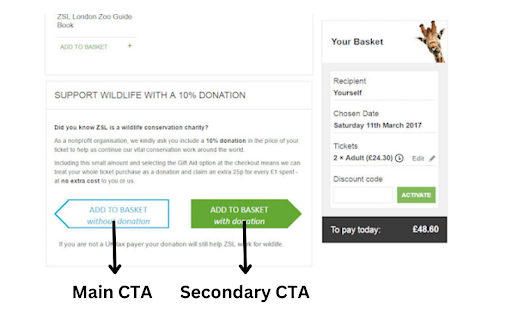
From the image above, you can see that the website utilized a solid green color to draw attention to the call-to-action (CTA) that would incur additional charges for the user. Meanwhile, the primary CTA was designed with faded borders, no fill color, and a less prominent color.
Blackhat UX Writing
This pertains to the practice of manipulating website copy by disregarding established copywriting principles with the intention of tricking readers and concealing important information from them.
Black hat UX writing usually hides details in heavy text chunks and applies dark patterns such as “confirm-shaming” and “trick questions.”
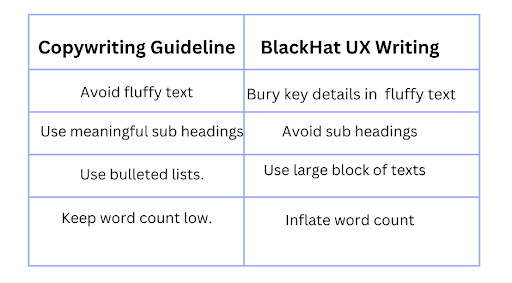
Confirm shaming: The act of guilting the user into opting for something. The option to decline is worded in such a way as to shame the user into compliance.
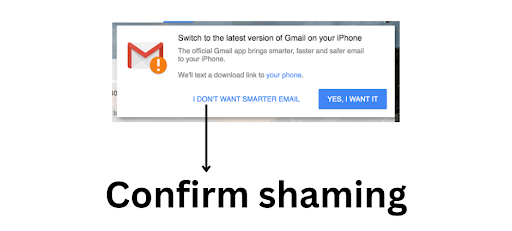
For instance, in the above image, you can see the use of words that will shame the user if he/she tried to reject a website offer.
Trick questions: This is more common in forms. While filling in a form, visitors are tricked to respond to a question in a way that makes them give an answer they didn’t intend to. In a zoomed-out view, the question appears to ask one thing. But the zoomed-in view shows that the question was asking something different.

Looking at the above image, the website subscribes the user to a weekly magazine by default and adds a checkbox to opt out if noticed. Consider that the user’s normal pattern selects the checkbox to opt-in not out.
Blackhat UX Design
This refers to the act of manipulating the user journey/flow to make it harder for users to take specific actions that affect profitability. Black hat UX design is usually done by applying dark patterns such as “hidden costs,” “sneak into basket,” and “roach motel.”
Hidden costs: This is when you get to the last step of the checkout process, only to discover some unexpected charges have appeared, e.g., delivery charges, tax, etc.
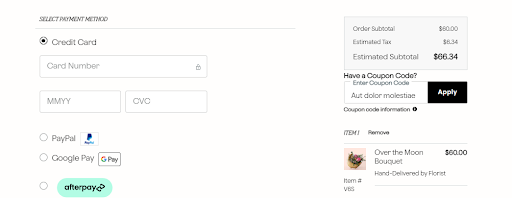
From the above example, visitors only get to learn about ‘care & handling fees’ as an extra cost on the payment details page. These extra costs were not highlighted in the PDP or cart. This is one of the major causes of high cart abandonment rates on most ecommerce sites.
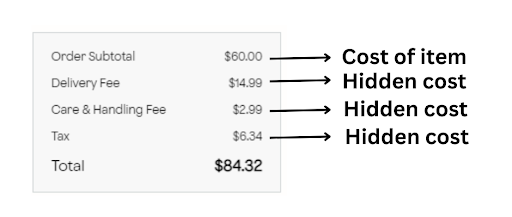
Sneak into the basket:
As the name suggests, this is when the site sneaks an additional item into your basket – often through an opt-out radio button or checkbox on a prior page – to make you spend more.
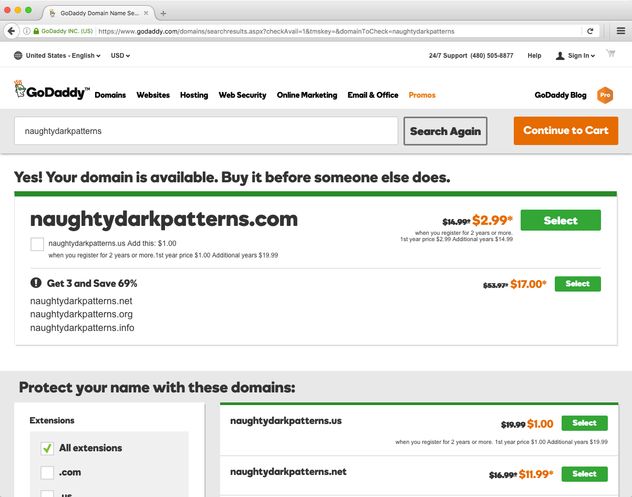
Using the above screenshot as an example, let’s imagine you pick the “get 3 and save 69%” bundle, priced at $17.00. The next page (below) automatically adds privacy protection to your basket, priced at $7.99. What’s not clearly explained here is that because you’re buying four domains, it’s actually quadruple the price shown (4 x $7.99 = $31.96).
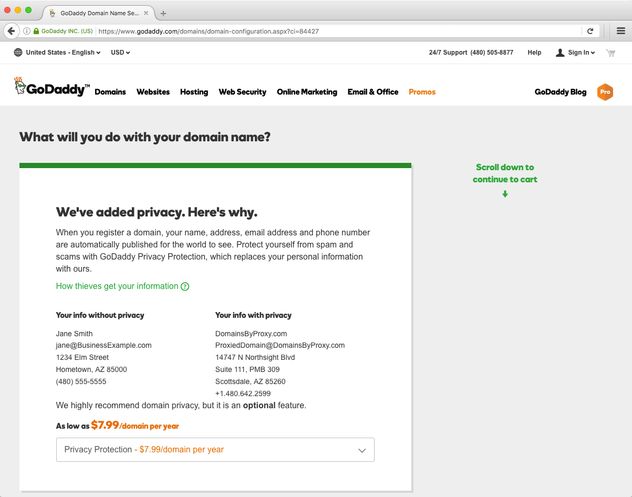
When you arrive on the cart page below, you’ll find the price has somehow inflated to $154.31. This is far from the $17.00 indicated on the first page. A number of things have been sneaked into the basket – 2 years of domain registration for all four domains (instead of one year, as indicated on the pricing on the first page), and the privacy protection. Additionally, the actual pricing of each item was misleading on the first page.
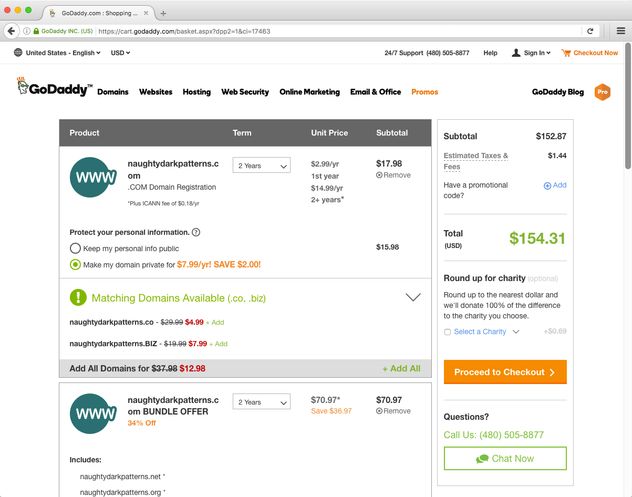
Roach motel:
The roach motel design pattern makes it easy for you to get in, but difficult to get out e.g. subscribing to a newsletter with a hidden unsubscribe button.
When site visitors discover this dark pattern, they are confused, deceived, annoyed, and furious.

Using the same example used for trick questions, when folks discover they’re subscribed to this magazine, getting a refund is not as easy as filling in a checkbox. They need to mail a confirmation form within 30 days to get a refund – definitely not convenient.

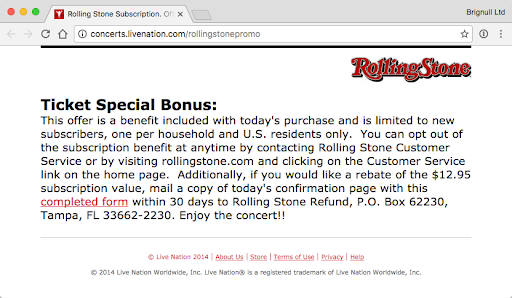
Cognitive Bias
People generally believe they’re rational and logical in their thinking, but this isn’t always the case.
According to Very Well Mind, cognitive bias:
“Is a systematic error in thinking that occurs when people are processing and interpreting information in the world around them and it affects the decisions and judgments that they make.”
Cognitive biases can be applied in eCommerce and can be used to anchor certain emotions or ideas by tricking the user’s mind to convert faster and with the highest profitable goal such as “anchoring bias,” “attentional bias” and “social influence.”
Anchoring bias:
“This refers to the inability of people to make appropriate adjustments from a starting point in response to a final answer. It can lead people to make suboptimal decisions. Anchoring affects decision-making in negotiations.”
Anchoring bias is a cognitive bias that is commonly known for the decoy effect, which tricks users into believing they are making the best choice by comparing prices, features, or situations, when in reality they are being led to the most profitable option. A well-known example of this is the popcorn price comparison, where the user is deceived into following a pattern that ultimately leads to the most profitable option.

In the above example, the user feels he/she is getting the most value for the money with the large popcorn compared to the medium-sized popcorn.
Attentional bias:
This refers to the tendency of individuals to pay more attention to certain stimuli or information based on their personal interests, emotions, or beliefs while ignoring or minimizing other information.
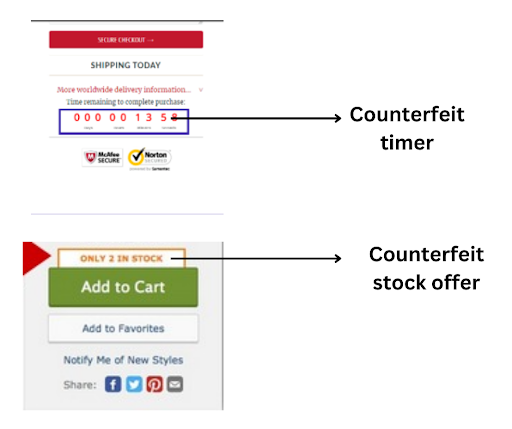
One way to manipulate user behavior is through attentional bias, which involves using aggressive urgency and scarcity-building techniques to create a false sense of urgency and trick the user into making an immediate purchase. This can be done by implementing fake limited-time offers or limited stock.
Social influence:
This is the phenomenon where people’s thoughts, feelings, and behaviors are affected by the presence or actions of others.
It can take many forms, such as peer pressure, conformity, or persuasion, and can be intentional or unintentional. Social influence can be a powerful tool in marketing and can be used to encourage people to take certain actions or make certain decisions.
Social influence can be applied in eCommerce by adding fake user-generated content or “UGC” such as fake testimonials, reviews, fake real-time product views, or purchases.
Based on research conducted in 2021, around 4% of online reviews with an estimated impact of $152 billion are actually fake. And it became well known that people are offering the service of fake reviews on freelancing websites.
This kind of fake social proof tricks the visitors into believing that “a lot” of people have tried out the product and are actually happy with it, pushing visitors into converting using the fake trust factor.
Who will write a 3+ paragraph comment to describe how to unbox and use an air fryer?
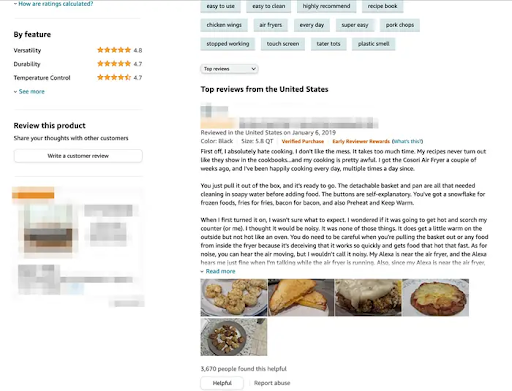
Consequences Of BlackHat CRO
Although blackhat CRO practices can result in an immediate increase in website conversions, the consequences in the long run can be severe. Here are some of the consequences that come with blackhat CRO:
1.It can lead to a high bounce rate, which occurs when a visitor leaves a website quickly after arriving. If visitors feel misled or tricked into visiting a website, they may quickly leave, resulting in a high bounce rate. This can damage a website’s search engine rankings and make it harder for the site to attract organic traffic.
2. It can harm a business’s reputation and brand image. If customers feel misled or deceived by a company’s tactics, they may lose trust in the company and its products or services. Negative reviews and feedback can quickly spread online, damaging a business’s reputation and losing customers.
3. It can also result in legal consequences. Many deceptive marketing practices are illegal and can result in fines or legal action. In addition to the financial costs, legal issues can also damage a business’s reputation and make it harder to attract new customers.
4. It can result in an increase in cart abandonment rates. Customers often feel deceived and frustrated when they discover additional charges that were not explicitly stated at the beginning of the purchase process. This can lead to a lack of trust in the brand, ultimately resulting in negative reviews and decreased customer loyalty.
Tips For Ethical Conversion Rate Optimization
Ethical CRO involves using data-driven insights to understand user behavior and preferences and implementing changes that align with the user’s needs and expectations.
Ethical CRO prioritizes the user’s experience and satisfaction over short-term profits, leading to more loyal customers and long-term success. It certainly doesn’t resort to manipulative or deceptive tactics.
It’s also important to mention that ethical CRO practices include clear and transparent communication with users, avoiding manipulative tactics such as fake urgency or hidden fees, respecting user privacy and consent, and providing value-added content and services.
It also involves continuous testing and iteration to optimize website performance and user experience based on user feedback and behavior. Overall, ethical CRO helps build trust and credibility with customers, leading to more sustainable growth and success for businesses.
Here is how you can conduct ethical CRO:
1. Be transparent:
Be clear and upfront about what you are offering and the benefits of your product or service. Avoid misleading visitors with false promises or exaggerated claims.
Here is an example of you can show transparency:
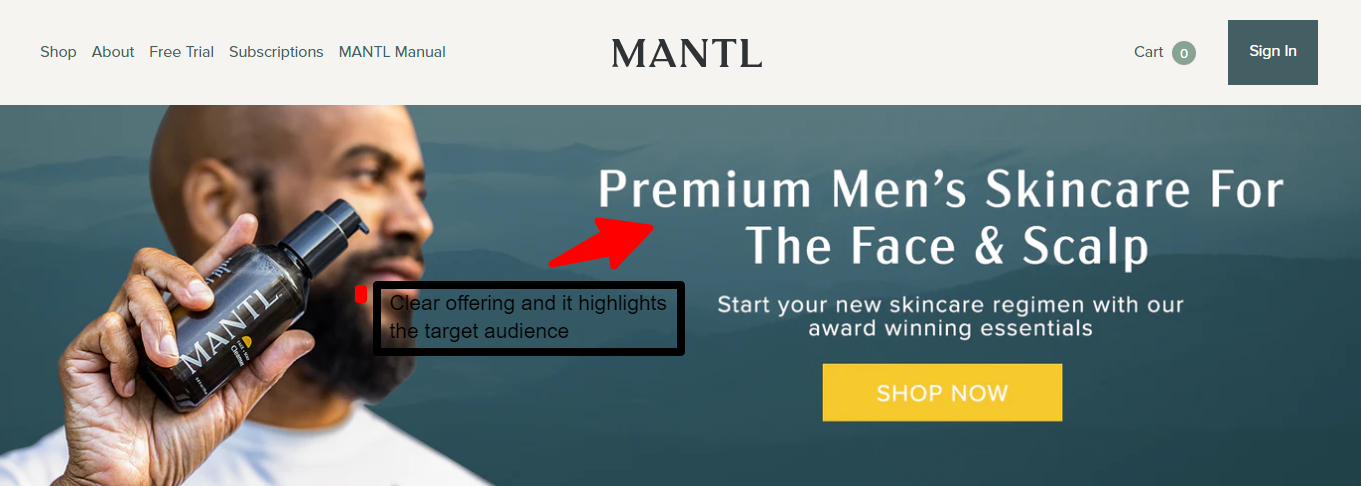
2. Respect visitor privacy:
Collect only the necessary information to complete the transaction or provide the service. Be transparent about how you use and protect customer data.
Here is an example of you can respect visitor privacy:
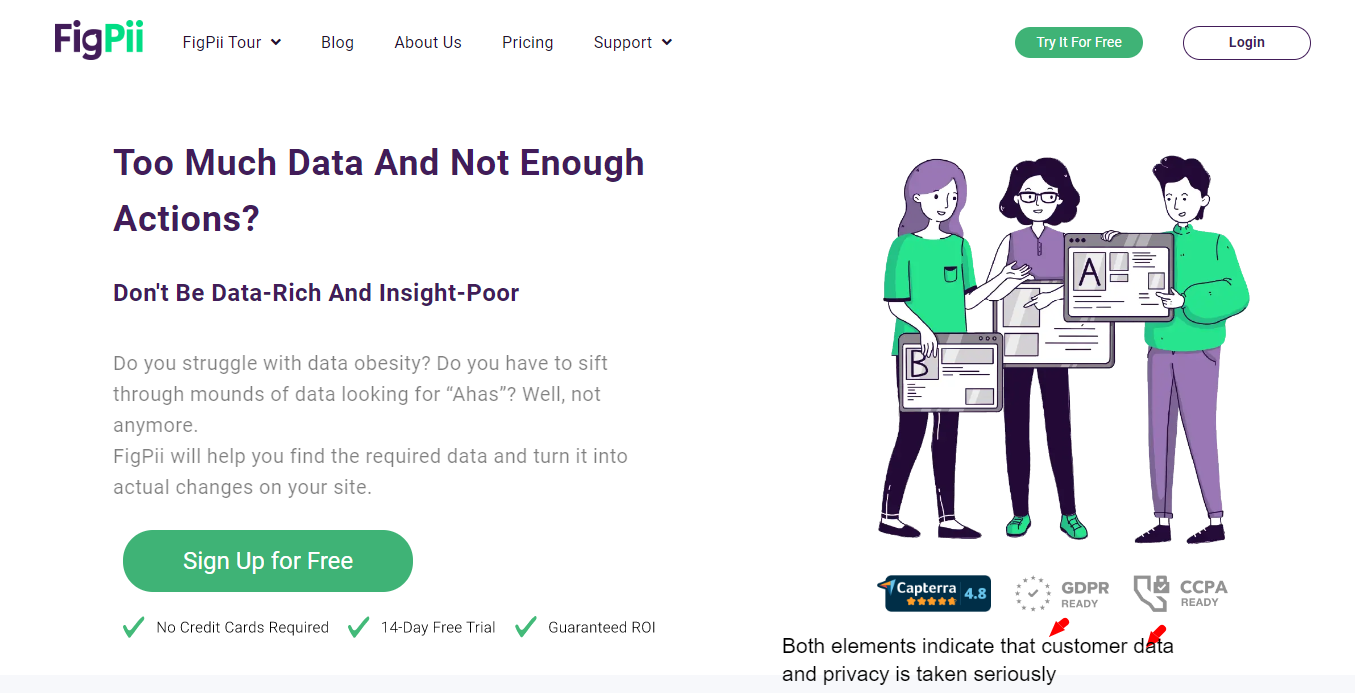
3. Provide value:
Offer content and incentives that are relevant and valuable to visitors. Ensure that your offer’s benefits are clear and visitors understand how it will help them.
4. Avoid aggressive tactics:
Don’t use aggressive or pushy tactics, such as pop-ups or pop-unders that obscure content or automatic opt-ins for newsletters or other marketing communications.
This example below, there’s no place to close this pop-up except you allow all the cookies or manually choose the ones you want, which will waste your time.

5. Test and optimize:
Use A/B testing to experiment with different variations of your website or landing page. Measure the impact of each change on conversion rates and make adjustments based on the results.
The Dangers of Prioritizing Conversions Over Customer Trust
In 2010, we collaborated with an eCommerce client that specialized in selling mobile phones and accessories. The marketing team at that time comprised of a single individual who was handling all aspects of marketing. When we introduced Conversion Rate Optimization (CRO) to them, they saw a 30% increase in the conversion rate, which impressed them greatly, and they began to allocate all their resources towards increasing conversions and sales.
Eventually, they decided to terminate our contract and create an in-house CRO team. However, due to a lack of understanding about what CRO entails and the difference between optimizing conversions and using manipulative tactics to increase them, they began to implement black hat CRO techniques.
In 2018, the client returned to us with a much larger CRO team consisting of around 10 members. However, the negative effects of the black hat CRO techniques they had been using were apparent, and they were unable to maintain their conversion rate. Rebuilding customer trust and relationships was a challenging task because the visitors had realized the manipulative acts.
The impact of these manipulative techniques was severe, causing the company to lose a significant amount of money, and they were forced to scale back operations and team size.
This case study demonstrates that while rapid business growth and quick gains through conversion optimization may seem appealing, building a strong customer base and brand image will always substantially and sustainably impact the business. It is essential to understand that there is no place for manipulative tactics in CRO, and it’s important to focus on ethical and honest practices that prioritize the needs and experiences of the customers.
Integrity should be the foundation of CRO.
I cannot stress enough how important it is to understand that conversion optimization is not about tricking visitors or manipulating them into doing things for your own gains. It is about building strong relationships with your customers and giving them experiences they will never forget.
If you’re only focused on making a quick buck and aren’t genuinely interested in meeting your customers’ needs, then you’re doing it wrong. You should be putting in the effort to understand who your customers are, what they want, and what motivates them to take action.
Conversion optimization isn’t just about increasing your website’s traffic, it’s about creating a loyal customer base that will keep coming back for more. By listening to your customers and giving them a voice, you build trust and create a positive reputation for your business.
But if you’re only interested in using underhanded tactics to increase conversions, then you’re hurting your customers and your business in the long run. Customers are smart, and they can tell when they’re being manipulated. If they feel like you’re not being honest with them, they won’t stick around for long.
So, if you’re serious about conversion optimization, focus on building strong customer relationships. Give them experiences they will never forget and show them that you genuinely care about their needs. Doing so will increase your conversions and build a loyal customer base that will keep coming back for more.



